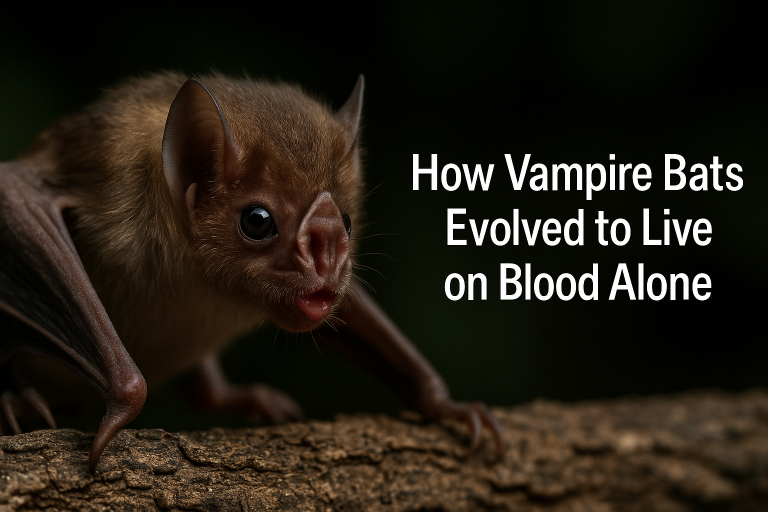Lizards are famous for their ability to drop and regrow their tails—a survival trick that has fascinated scientists for centuries. But not all lizards can do this. Some species regrow perfect replicas, others grow back stumpy replacements, and a few can’t regenerate at all.
What determines whether a lizard can regrow its tail? The answer lies in evolutionary trade-offs, genetic pathways, and cellular mechanisms that vary across species.
In this article, you’ll learn:
-
How tail regeneration works at a cellular level
-
Why some lizards evolved this ability while others didn’t
-
The surprising costs of regrowing a tail
-
How scientists are studying lizard regeneration to advance human medicine
1. The Mechanics of Tail Regeneration: How It Works
When a lizard detaches its tail (a process called autotomy), a complex biological process kicks in to regrow it. Here’s what happens:
A. Tail Loss and Healing
-
The lizard contracts muscles to sever the tail at a pre-formed fracture plane (a weak point in the vertebrae).
-
Blood vessels constrict instantly to prevent bleeding.
-
A blastema (a mass of stem cells) forms at the wound site.
B. The Regrowth Process
-
Stem cells multiply and differentiate into muscle, cartilage, and skin.
-
Nerves and blood vessels regrow to support the new tissue.
-
The tail regenerates, though it’s often shorter, less flexible, and made of cartilage instead of bone.
Key Difference:
-
Anoles and geckos regrow nearly perfect tails.
-
Skinks grow back stubby, cartilage-based tails.
-
Some monitors and iguanas can’t regenerate tails at all.
2. Why Can Some Lizards Regrow Tails and Others Can’t?
Not all lizards evolved this ability. The differences come down to:
A. Evolutionary Trade-Offs
-
Fast-moving lizards (like anoles) frequently lose tails to predators, so regeneration is crucial.
-
Large, slow lizards (like monitors) rarely lose tails, so regeneration wasn’t prioritized.
B. Genetic Factors
-
Wnt/β-catenin pathway – Critical for stem cell activation in regenerating species.
-
p53 gene – Suppresses tumors but may also limit regeneration in some lizards.
C. Energy Costs
Regrowing a tail requires massive energy. Some species (like desert-dwelling lizards) can’t spare the resources.
3. The Hidden Costs of Tail Regeneration
Losing and regrowing a tail isn’t free—it comes with serious downsides:
✔ Slower movement – The new tail is often weaker.
✔ Reduced social status – Some lizards with regrown tails are less attractive to mates.
✔ Higher metabolic demand – Regrowth requires extra food and energy.
Example:
-
Green anoles with regrown tails have lower sprint speeds, making them easier prey.
4. Lizards That Can’t Regrow Tails (And Why)
Some lizards never evolved tail regeneration, including:
-
Monitor lizards (Varanus spp.) – Their tails are too muscular and vital for balance.
-
Chameleons – Their tails are prehensile (gripping), so losing them is catastrophic.
-
Gila monsters – Their tails store fat; losing one could mean starvation.
Why?
For these species, keeping the tail was more important than regrowing it.
5. Medical Breakthroughs: What Lizards Teach Us About Human Healing
Scientists are studying lizard regeneration to improve human medicine, including:
✔ Spinal cord repair – Lizard tails regrow nerves, something humans can’t do.
✔ Organ regeneration – Understanding blastema formation could help regrow damaged tissues.
✔ Anti-scarring treatments – Lizards heal without scars—a key goal for surgeons.
Recent Study (2023):
Researchers at Arizona State University identified microRNAs that control tail regrowth, potentially unlocking new therapies.
6. Can Pet Lizards Regrow Their Tails?
If you own a lizard, here’s what to know:
✔ Good regenerators: Leopard geckos, anoles, skinks.
✖ Poor/non-regenerators: Chameleons, monitors, bearded dragons (partial regrowth only).
Care Tip:
Avoid handling lizards by their tails—stress-induced autotomy can happen even in species that don’t usually drop them.
Conclusion: A Survival Trick With Limits
Tail regeneration is a remarkable evolutionary adaptation, but it’s not universal. The ability depends on predation risks, energy costs, and genetic factors—proving that even in nature, there’s no free lunch.
As research continues, lizard regeneration may unlock new medical miracles, from nerve repair to scar-free healing.




Leave a Comment